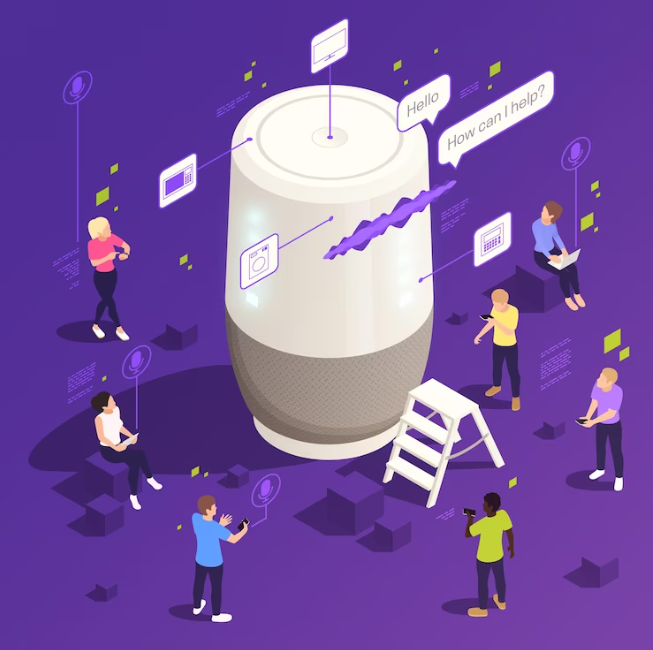Decoding AI Alphabet Soup: A Guide to Essential Business Acronyms
In the fast-paced world of Artificial Intelligence (AI), understanding the jargon can often feel like a whirlwind tour through a “spaghetti soup” of acronyms.
While AI might be the star of the show,
…a deeper dive reveals a complex list of acronyms that can leave even the savviest of business minds scratching their heads.
If you’re seeking AI solutions without getting lost in the technical jargon, this mini-glossary is here to help you navigate the lexicon.
Let’s demystify the most common acronyms and supercharge your AI vocabulary.
AI Acronym Glossary: at-a-glance
- AI: Artificial Intelligence
- DL: Deep Learning
- NLP: Natural Language Processing
- NLU: Natural Language Understanding
- ML: Machine Learning
- RPA: Robotic Process Automation
- VA: Virtual Assistant

AI: Unveiling the Power of Artificial Intelligence: Artificial Intelligence (AI) isn’t just a buzzword; it’s a dynamic field within computer science where machines simulate and replicate human behaviour like speech recognition, decision-making, and language understanding. AI has a rich history, but what’s driven its recent surge is accessibility. Thanks to tech giants’ open-source contributions, grasping AI has become easier. Everyone now has access to tools like ChatGPT and Bard. As computing power advances, AI applications have flourished, particularly in areas like robotics.
Conversational AI: Where Bots Speak Human: Conversational AI taps into natural language processing (NLP) to simulate human-like conversation through AI-powered bots. These bots grasp customer intent, automate tasks, and deliver solutions via voice or messaging. This innovation is reshaping customer interactions, enabling transactions and services without a human intermediary. Beyond just chat, Conversational AI orchestrates processes for seamless problem-solving.
Deep Learning (DL): The Brainpower Behind AI
Deep Learning, a subset of AI, mirrors human brain processing for decision-making. By learning from massive data sets, DL identifies patterns. Yet, its limitation lies in encountering new problems without historical data. Pairing AI with human-guided insights ensures outstanding customer experiences.
Natural Language Processing (NLP): Giving Machines the Gift of Language
NLP enables machines to process unstructured text data, transforming it into actionable insights. This technology drives accurate decision-making, exemplified by voice-activated devices like Alexa. NLP revolutionises customer service, understanding nuanced language to deliver precise solutions.
Natural Language Understanding (NLU): The Essence of Language Deciphered
A subset of NLP, NLU equips machines to understand human speech. It delves into meaning, processing data contextually. While NLP and NLU sound similar, NLU solely centres on language comprehension.
Machine Learning (ML): The Path to Smarter Machines
Machine Learning empowers computers to learn from data, becoming proficient at pattern recognition, decision-making, and more. It’s ideal for unfamiliar data scenarios, boosting intelligent actions with minimal human intervention.
Machine Learning: Learning from Data
Machine Learning is like a digital brain that learns from patterns. Imagine you’re teaching a child to identify animals. You show them pictures of cats and dogs, and over time, they learn to distinguish between the two. Similarly, ML algorithms work by being fed tons of data and learning from it.
Robotic Process Automation (RPA): Efficiency Through Automation
RPA leverages software robots to automate processes, cutting costs and boosting performance. It’s perfect for routine tasks governed by structured data. From basic rules-based automation to advanced machine learning solutions, RPA streamlines operations.
>>Download 100 Chat GPT Prompts for Business<<
Virtual Assistant (VA): Your AI Companion
Now, let’s talk about Deep Learning, the rockstar of ML. Imagine your brain, it’s made up of interconnected neurons that process information. Deep Learning mimics this neural structure in its artificial networks called neural networks. But instead of a few connections, these networks have layers upon layers, creating a complex web of information processing.
In Conclusion
In the evolving world of AI, acronyms can be confusing, but learning the essentials empowers you to harness AI’s potential for your business. Whether you’re diving into Conversational AI, unlocking Deep Learning insights, or navigating the intricacies of NLP, understanding these terms is your passport to AI success.
